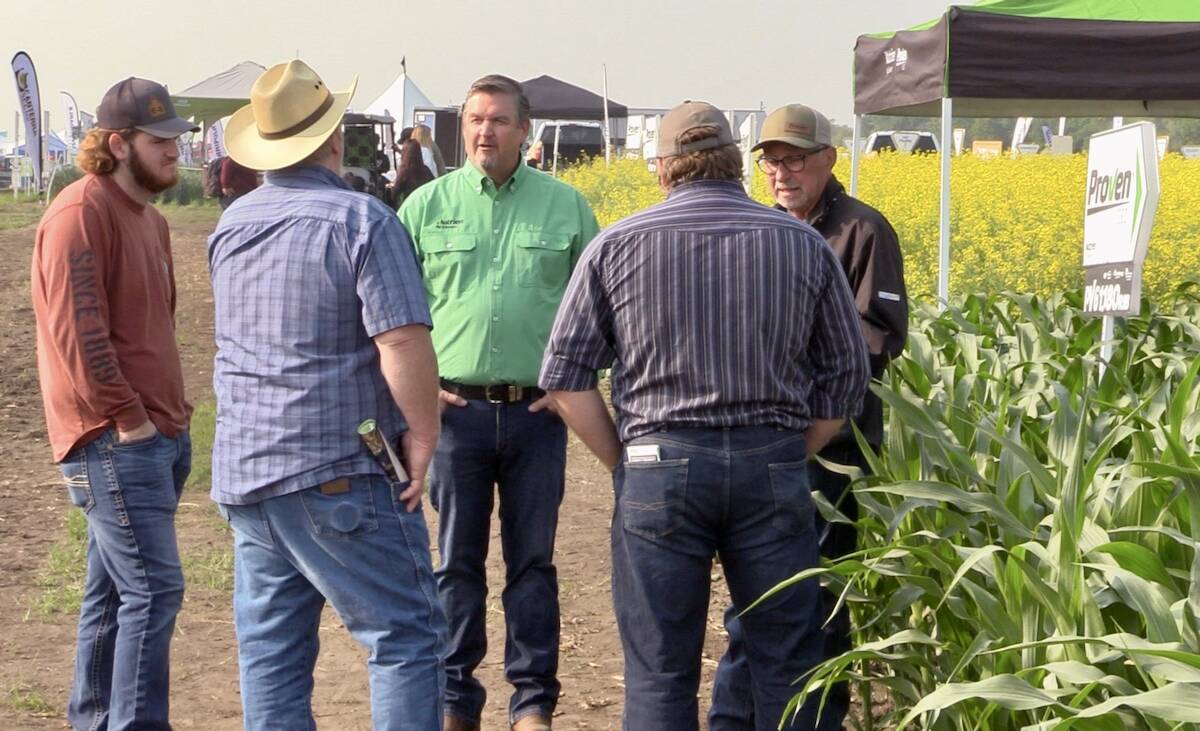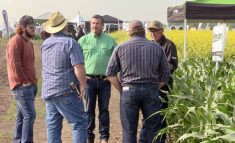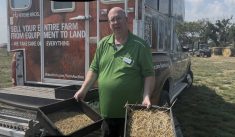REGINA – Tim Island’s hardest decision used to be whether to grow wheat or durum.
Living in Shaunavon, in the heart of the brown soil zone, he already knew half the land would be summerfallowed.
“We were traditional 50/50 farmers,” he told about 1,000 farmers at the Saskatchewan Soil Conservation Association’s annual meeting last week.
Island, at 31, has 14 years of farming experience. He farmed his first quarter at 17 and took over the family farm young due to his father’s poor health.
But it was his father-in-law, Rollice Gronvold at Tisdale, who got him interested in conservation farming.
Read Also

Interest in biological crop inputs continues to grow
It was only a few years ago that interest in alternative methods such as biologicals to boost a crop’s nutrient…
Island alluded to family discussions where the relative merits of summerfallow versus continuous cropping were debated.
Conventional wisdom says it is too dry to continuous crop in the Palliser Triangle, but Island began to see the amount of moisture received doesn’t matter as much as how much is saved.
For a brown soil zone farmer, that made a lot of sense.
But what really sold him was a trial run, where he rented a Concord air seeder – the same outfit used by Gronvold – and put in a crop of winter wheat.
“I was amazed,” he told the meeting. Despite seeding at shallow depths, good seed-to-soil contact was maintained. He said the prospect of saving moisture opened up a whole new range of crops.
That was in 1989, but it took him another three years of attending soil conservation meetings, renting equipment and networking with other farmers before he decided to make the wholesale change.
Part of his caution, Island said, was he couldn’t find another “fool” who was doing the same thing in south-western Saskat-chewan.
Then he found Barry and Cecil Reisner of Limerick, Sask., seed growers and veterans in applying the new techniques to the brown soil zone.
Island said a visit to the Reisner farm helped him see how conservation farming can be viable.
Island said Cecil’s advice probably gained him five years of experience.
Bankers not open to idea
Still, when it came time to finance his new air seeder, Island found that knowledge wasn’t something he could bank on. Continuous cropping and direct seeding in the brown soil zone were novel concepts for bankers. Finding the money to buy the machine proved nearly as hard as deciding which one to buy.
Start-up costs also caught Island off guard, despite his caution.
When he went to insure his crops, he found the area average for stubble cropping was 10 bushels/acre. The premium was going to cost him three bushels alone. “That pretty well optioned me out of crop insurance.”
To add cash flow and keep the banker from getting nervous, Island took up an offer to custom seed some neighboring land. He custom farms 1,500 acres for four clients – including seeding, spraying and combining. All told, Island farms 3,500 acres.
With all the main expenses like Roundup and fertilizer in the spring, the first year was hard on the cash, Island said. Now, going into his fourth year in the rotation, he offsets some of that expense by buying inputs in the fall. Island said his five-year goal was not to go broke direct seeding.
Two-thirds of the way there, Island said he’s discovered some hidden benefits to direct seeding, including the ability to straight combine because direct seeding promotes even germination and helps eliminate second growth in crops, which in turn has cut down on grain aeration costs.
Soil quality has improved enough to hold the scarce moisture.
“The water doesn’t run into the sloughs any more. It goes where it’s supposed to.”
And he’s growing flax, mustard, lentils and barley, as well as wheat. One of Island’s other goals was to reduce the stress of modern farming and spend more time with his family.
“The mental part of farming has changed so much,” he said, adding there’s more money tied up now.
















